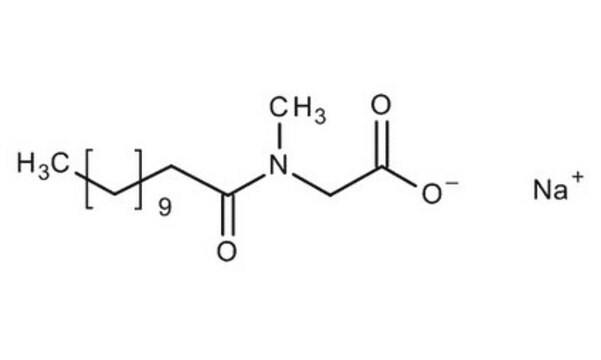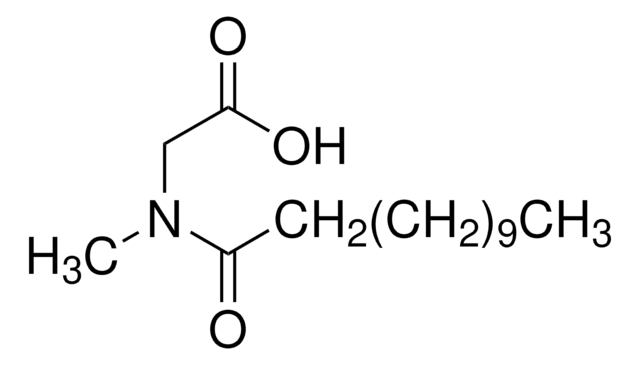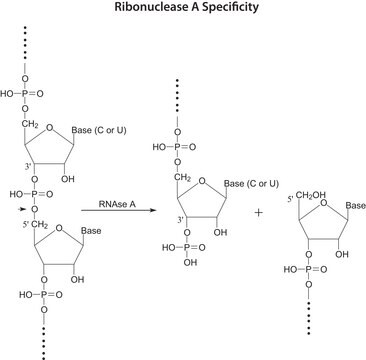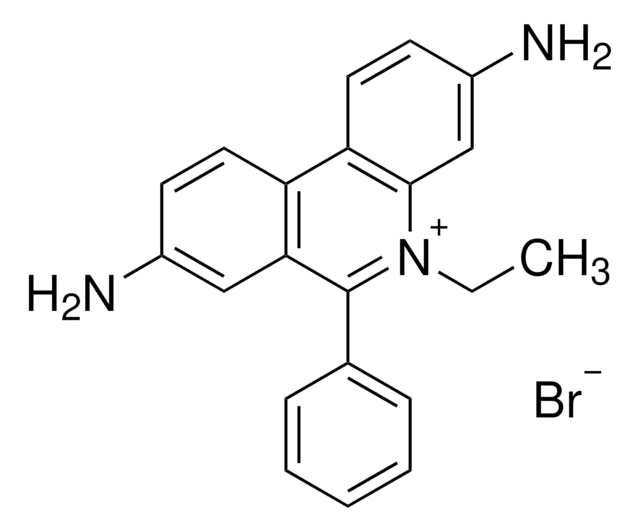61745
N-Lauroylsarcosine sodium salt
≥97.0% (HPLC)
Synonyme(s) :
N-Dodecanoyl-N-methylglycine sodium salt, Sarkosyl NL
About This Item
Produits recommandés
Description
anionic
Niveau de qualité
Pureté
≥97.0% (HPLC)
Forme
powder
Poids mol.
micellar avg mol wt 600
Nombre d'agrégation
2
Technique(s)
protein expression: suitable
protein purification: suitable
protein quantification: suitable
Impuretés
≤7% water
CMC
14.6 mM (20-25°C)
Solubilité
H2O: very soluble 293 g/L at 20 °C
Chaîne SMILES
[Na+].CCCCCCCCCCCC(=O)N(C)CC([O-])=O
InChI
1S/C15H29NO3.Na/c1-3-4-5-6-7-8-9-10-11-12-14(17)16(2)13-15(18)19;/h3-13H2,1-2H3,(H,18,19);/q;+1/p-1
Clé InChI
KSAVQLQVUXSOCR-UHFFFAOYSA-M
Vous recherchez des produits similaires ? Visite Guide de comparaison des produits
Description générale
Application
Autres remarques
Mention d'avertissement
Danger
Mentions de danger
Conseils de prudence
Classification des risques
Acute Tox. 2 Inhalation - Eye Dam. 1 - Skin Irrit. 2
Code de la classe de stockage
6.1A - Combustible acute toxic Cat. 1 and 2 / very toxic hazardous materials
Classe de danger pour l'eau (WGK)
WGK 1
Point d'éclair (°F)
512.6 °F - closed cup
Point d'éclair (°C)
267 °C - closed cup
Équipement de protection individuelle
Eyeshields, Gloves, type N95 (US)
Faites votre choix parmi les versions les plus récentes :
Déjà en possession de ce produit ?
Retrouvez la documentation relative aux produits que vous avez récemment achetés dans la Bibliothèque de documents.
Les clients ont également consulté
Notre équipe de scientifiques dispose d'une expérience dans tous les secteurs de la recherche, notamment en sciences de la vie, science des matériaux, synthèse chimique, chromatographie, analyse et dans de nombreux autres domaines..
Contacter notre Service technique










